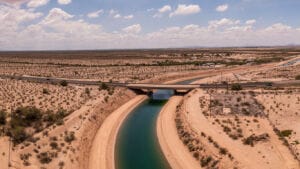There’s What in My Water?
“Green” technology is constantly evolving and, consequently, so is my knowledge of it. Ever since I embarked on the journey of learning more about sustainability, nothing ceases to amaze me. Maybe some of the things I write about are old news to those more educated on the topic, but I’m sure there are many individuals such as myself who are taking this one day at a time.
In that vein, I stumbled upon a technology that NASA uses to solve the problem of not having a sufficient water supply for its astronauts in space. Hauling water to space is difficult and expensive, so instead NASA utilizes a special device that recycles astronauts’ sweat and urine (yes, urine) into drinking water.
The wastewater enters a processing machine where it goes through six steps of cleansing, including adding iodine to kill microbes. The water is boiled off, vapor collected and brine from urine removed. Add a dash of water from air condensation, filter, and voilà, recycled drinking water is born!
As space exploration evolved it became obvious the technology would be vital to the long-term success of NASA missions.
 The recycling system was brought up to the International Space Station last November by the space shuttle Endeavour. However, only recently were the astronauts actually able to test the fruits of their “labor.” The project, Environmental Control and Life Support Systems (ECLSS), also doubled the living capacity of the space station from three people to six.
The recycling system was brought up to the International Space Station last November by the space shuttle Endeavour. However, only recently were the astronauts actually able to test the fruits of their “labor.” The project, Environmental Control and Life Support Systems (ECLSS), also doubled the living capacity of the space station from three people to six.
Another plus? A portion of ECLSS has been adapted to Earth and is already helping rural villages in northern Iraq, the Dominican Republic and Pakistan generate clean drinking water.
One company at the forefront of this water treatment technology is Water Security Corporation. The company has taken the technology originally developed for NASA and commercialized it to make it accessible to those who need it most.
An interesting tidbit the company includes on its Web site is how similar the situations are between NASA and rural villages in developing nations in terms of having a sufficient water supply. Like the astronauts on the space station, residents in these villages must recycle everything they have. With the help of this technology, the villagers can treat what they DO have in order to keep the water supply constant without having to rely on the whims of others.
People in the developed world take for granted the basic things we are lucky enough to have on a day-to-day basis. This reminded me to truly make an attempt to not be wasteful and conserve our limited resources.
Oh, and in case you were wondering, the astronauts say the water tastes just fine. 🙂
www.watseco.com
science.nasa.gov



